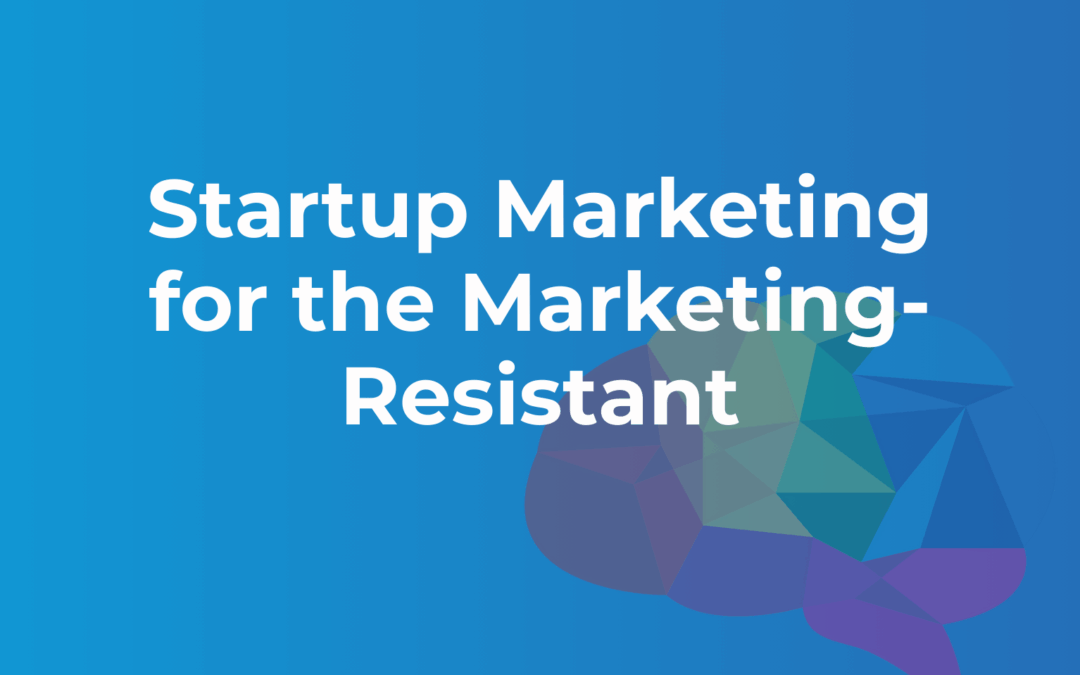You didn’t start your company to become a marketing expert.
You built it to solve a problem, launch a product, or bring something better into the world.
But like it or not, startup marketing is part of the job — especially in the early days, before you have a team.
This no-fluff guide is for founders who hate marketing but know they need to do something. These are the simple, strategic steps that actually work — even if you’re doing it solo.
Step 1:
Accept That Marketing Is Part of Your Job
Here’s the truth most startup advice skips over:
Until you have a team, you are your marketing department.
That doesn’t mean you need to be on TikTok or build a 40-page content calendar.
It does mean you need to show up in the world — clearly, consistently, and with purpose.
Marketing isn’t optional. It’s how people find you, trust you, and decide to buy from you.
Mindset shift:
Marketing isn’t bragging.
It’s just helping the right people understand what you do and why it matters.
You’re not hyping yourself up. You’re offering something valuable.
(And if you’re not? That’s not a marketing issue — it’s a product one.)
Step 2:
Start with Just Three Things
If startup marketing feels overwhelming, don’t start with everything.
Start with these three. They’re your foundation:
1. A Clear Value Proposition
You need to be able to explain, in one or two sentences:
-
-
-
-
-
- Who you help
- What you offer
- Why it matters
-
-
-
-
This is the message every potential customer, partner, and investor should hear first.
If you can’t explain your value clearly, your marketing won’t either.
2. A Basic Web Presence
No need for a $50K build. Just one clean, simple page that includes:
-
-
-
-
-
- Your value proposition
- A quick “About” section
- A way to get in touch
-
-
-
-
That’s enough to make your business look real and trustworthy.
Tools like Squarespace, Wix, or Carrd can get you up and running in an afternoon.
3. An Email Signup Form
Start building your audience now — even if you’re not ready to email them yet.
Capturing email addresses is how you stay in touch with potential customers and build a base for future launches, updates, or promotions.
Use free tools like Mailchimp or HubSpot.
Keep it simple: one form, one list, one step closer to growth.
Step 3:
Focus on Consistency, Not Complexity
You don’t need a complicated startup marketing strategy.
You need a rhythm you can actually follow.
Here’s your starter kit:
-
-
-
- Post once a week on LinkedIn, your blog, or wherever your audience is.
Keep it useful, real, and non-spammy. Show what you’re building and why it matters. - Send one email a month.
Just a short update, even a few sentences. You’re not writing a novel — you’re keeping a pulse.
- Post once a week on LinkedIn, your blog, or wherever your audience is.
-
-
Consistency beats complexity.
One steady post a week will do more than a perfect campaign you never publish.
Step 4:
Know When It’s Time to Get Help
Eventually, you’ll hit a ceiling.
The DIY approach only gets you so far. If leads aren’t converting, growth has stalled, or marketing is eating up time you don’t have — it’s time to call in help.
You don’t need a full-time hire to level up.
You just need someone who’s done this before — someone who can step in, assess what’s working, and put a smarter plan in motion.
That’s where a fractional marketer or small firm (like Mathlete Marketing 👋) can help.
You focus on running your business.
We’ll make sure the right people hear about it.
Final Thoughts:
You Don’t Have to Love Marketing — But You Shouldn’t Ignore It
You didn’t become a founder to spend your days writing subject lines or fussing with CTAs.
But if you want people to find you — and trust you — startup marketing has to be part of the build.
You don’t need to be amazing at it.
You just need to be visible, clear, and consistent.
Start small.
Stay steady.
And when you’re ready to hand it off, work with someone who gets what you’re building — and can help the right people see it too.
Because in the end, startup marketing isn’t about making noise.
It’s about building momentum.

